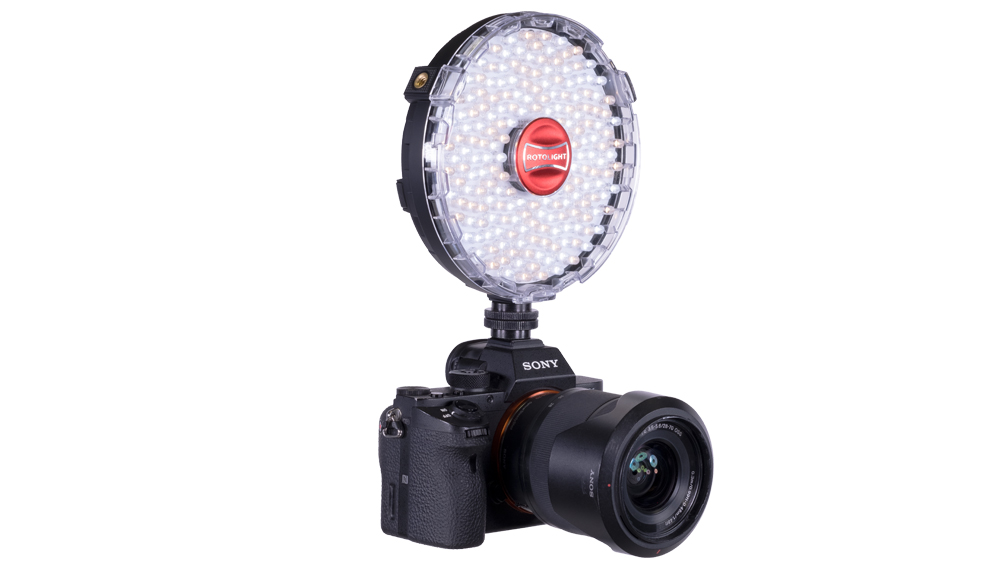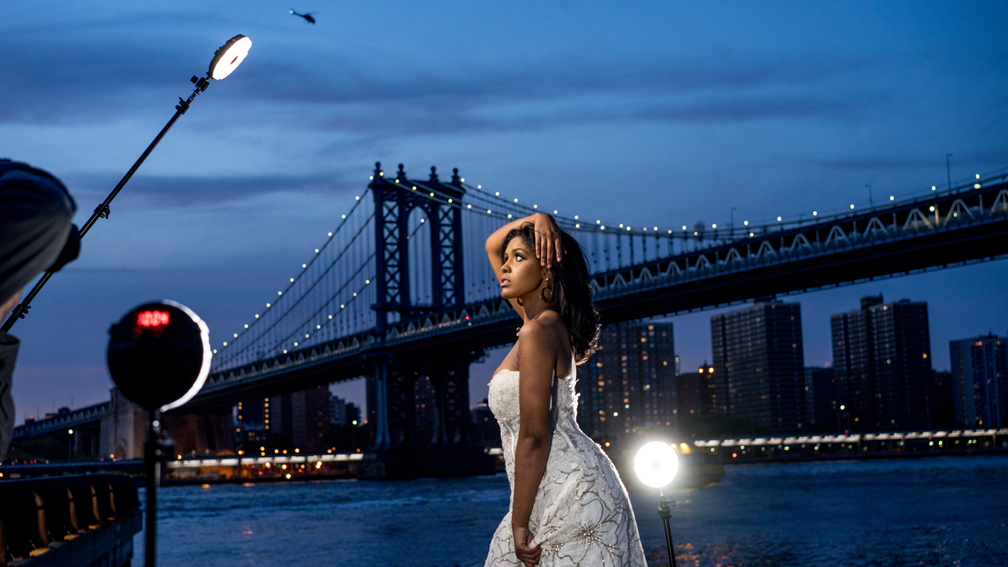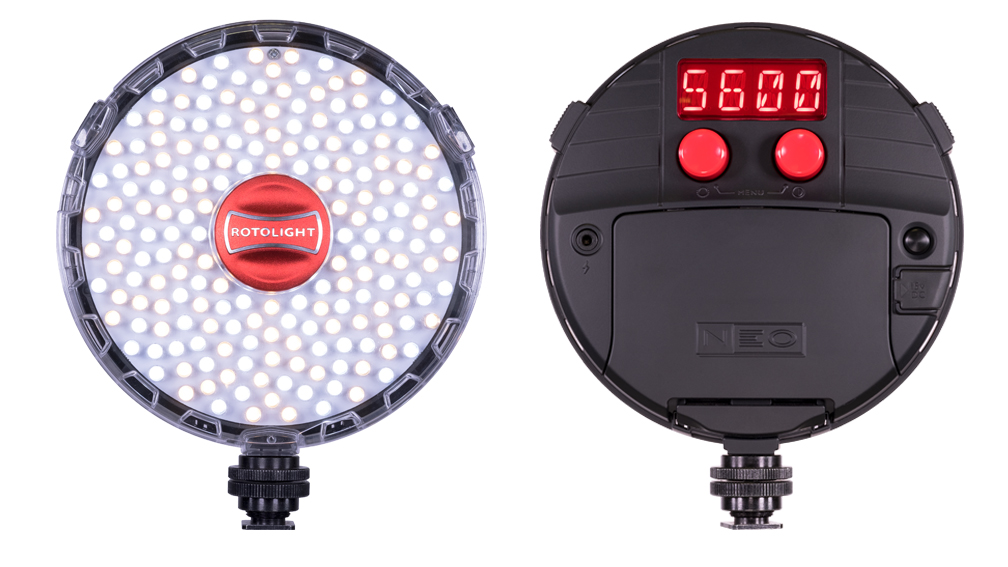Switching Instantly from Continuous Light to Flash
Review by Erik Vlietinck
The NEO 2 is Rotolight’s disc-shaped, polycarbonate, all-in-one, high-speed sync (HSS) flash and continuous on-camera LED light. Unlike traditional on-camera flash, the NEO 2 has no recycle time. It succeeds well as a continuous light; but using it as a flash requires a different workflow than what you’re used to.
My test unit came with a modified Elinchrom Skyport transmitter that communicates with the NEO 2’s built-in 2.4-Ghz HSS wireless flash receiver, a set of optional special effects filters for use with the continuous light mode, a soft case, and a handle to hold the NEO 2. The transmitter enables users to wirelessly control up to 10 lights in four groups at up to 656′. It’s compatible with all other Elinchrom Skyport devices.

The NEO 2 performs well in continuous light mode, capable of throwing around 2000 lux at 3′, at least when it’s set to a color temperature of around 4000K. At lower or higher temperatures, the light dims between 5% and 10%. Two control knobs let you set brightness and color temperature of the 50° light beam. The color temperature that’s shown on the LCD screen with large red numerals is spot on. It ranges from 3100–6300K. Rotolight paid special attention to the light’s skin-tone rendition, resulting in a CRI of 98 for skin tone R15, a CRI of 96 overall, and a TLCI value of 91.
In continuous light mode, you can play around with built-in special effects such as strobe, lightning, fire, police, etc. For example, if you’re shooting a crime scene, you can emulate the presence of a police car by putting a 712 Bedford blue filter in front of the unit and selecting the Police effect that simulates an emergency services light.

Before testing the NEO 2’s flash functionality, I realized that LED light works differently from traditional flash. In fact, to use the NEO 2 without frustration, you should forget much of what you know about speedlights and the power you can expect, in particular. The images I initially shot with my one NEO 2 looked underexposed, because I kept positioning the light at a distance of one meter or more and setting my camera at ISO 100. By positioning the light closer to the subject and the camera at a higher ISO value, I succeeded in exposing images correctly.
That is current LED technology for you: It will give a soft result; but luminous power is not yet its strength. The soft shadows, without a need for modifiers, is one of LED’s benefits that you can easily achieve with one NEO 2, but if you aim at getting an even exposure across a larger subject, you’ll have to use at least two or three NEOs.

© Peter Muller
That may look like an expensive proposition, but it will come with other benefits. For example, the NEO 2 has a zero recycle time and you can instantly switch to a very decent continuous light for video and photography where flash may be considered to be obtrusive. In addition, LEDs have a long lifespan and they keep their color accuracy a lot longer than traditional studio lights or flashes. ■






